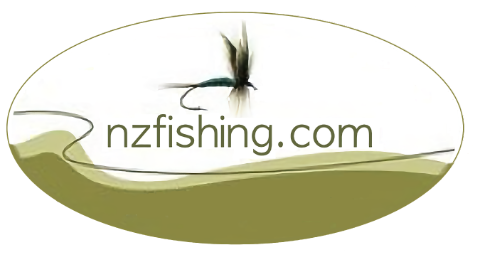| Fish type |
Brown and rainbow trout averaging around 2 kg and a small population of landlocked Quinnat salmon. Late in the season large see run salmon move into the lake from the Rakaia river to spawn in the Mellish stream. |
| Situation |
Lake Heron lies in a valley between the Wild Man's Brother range and Taylor range and is fed by a number of small streams. At its northern end the lake spills into the Lake Stream which is one of the tributaries of the Rakaia river. |
| Map and conditions |
Access map by Google
View the MetService weather forecast.
|
| Description |
Lake Heron is a long Y shaped lake and is the largest of the Ashburton lakes. There is limited access for the shoreline angler and fishing from boats is only permitted if the boat is anchored. Due to the steepness of some of the banks and the vegetation that often comes right to the water's edge, foot access is quite restricted in many areas. There can be good fishing around the eastern bank where the small Swin River enters the lake (though ensure you get the landowners permission before crossing their land).
The drop off along the western shoreline this section is very steep and so is better suited to spin fishing.
|
| Access |
There is an access road along the western shoreline for about 2 km and a track along the southern shoreline that are suitable for four-wheel-drive vehicles. The Hakatere-Heron Road continues to the northern end. It veers inland and crosses an old shingle bed created by the Cameron River, and ends at Lake Stream which is the outflow into the Rakaia River. Great care should be taken when travelling this section as sections of the road can get very boggy after inclement weather. Access to the eastern shoreline is limited.
Anglers who wish to use a boat will be able to reach a lot more productive water though care should be taken as aware that can change very rapidly making boating dangerous.
|
| Methods |
Lake Heron is open to all methods of fishing. In some of the deeper sections, spinning is the preferred and obvious choice. Often the close vegetation precludes the back casting required for flyfishing and again makes spinning the better option. Competent anglers who can cast a fly between the trees should be rewarded however by the number of cruising trout that move along the shoreline searching for food under the overhanging vegetation. |
| Recommended tackle |
Due to the very changeable nature of Lake Heron, it is difficult to recommend tackle to suit all conditions. During the warmer weather when the lake is calm, very light lines are required. In the more boisterous conditions however a heavier line (weight seven or above) is required to counter the windy conditions. As a consequence, spinning has become a preferred option for many when fishing this lake as it is less susceptible to the wind conditions. |
| Recommended lures |
Dry flies: During the warmer months, bushy flies such as a Coch-Y-Bondhu or Humpy fished around the overhanging vegetation during the day and smaller flies such as a Black Gnat, Twilight Beauty or Kakahi Queen in the evening.
Nymphs: Small Pheasant Tail and Hare and Copper.
Wet flies: Around in flowing streams Mrs Simpsons, Hamill's Killer and other bully limitations can be productive.
Spinners: Toby's and Rapalas and spinners that represent small fish. When spin fishing, ensure that the spinner gets down deep particularly when no surface activity can be seen.
|
| Tributaries |
The major tributaries of Lake Heron are the Mellish stream and the Swin river (both of which are very remote). Lake Stream at the northern end of the lake is the outflow for Lake Heron and can provide excellent if rather challenging fishing. |
| Regulations |
| Applicable to |
Lake Heron |
| Region |
Central South Island regulations |
| Open season |
First Saturday in November to 30 April |
| Methods |
Artificial fly, spinner, bait |
| Bag limit |
Total sports fish: 6 of which no more than 4 trout |
| Size limit (cm) |
Trout: None
Salmon: Minimum 250mm, maximum 450mm |


